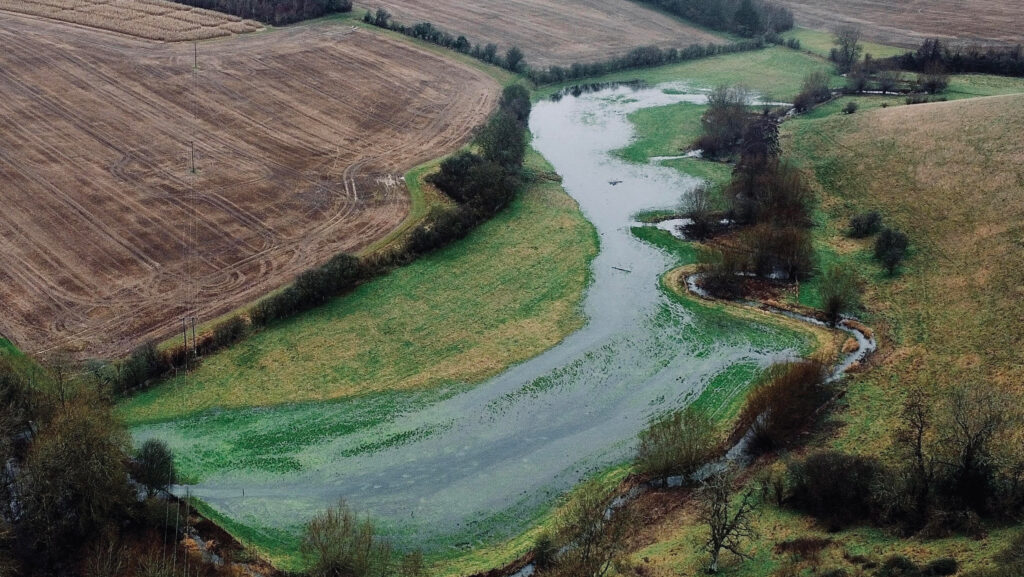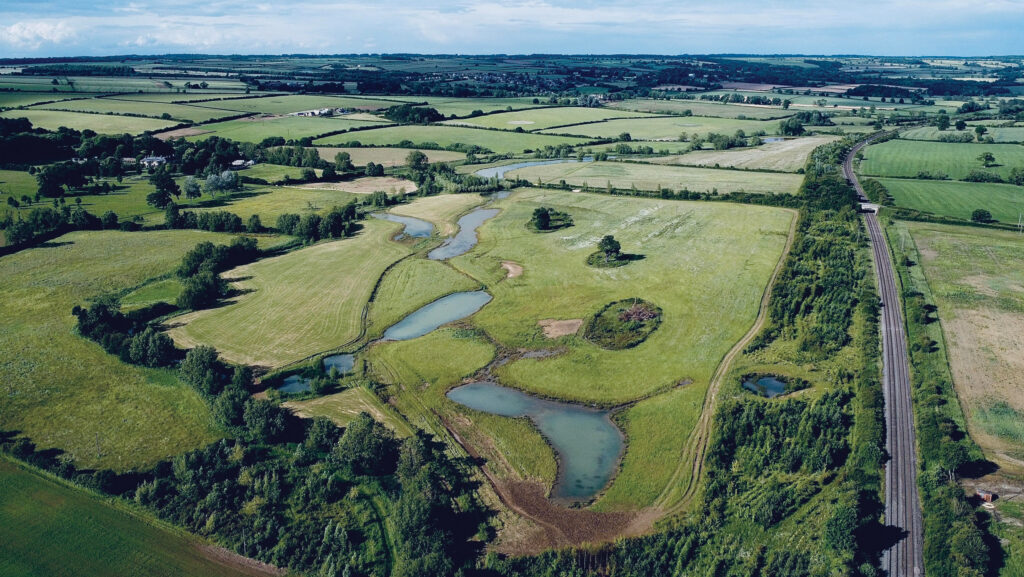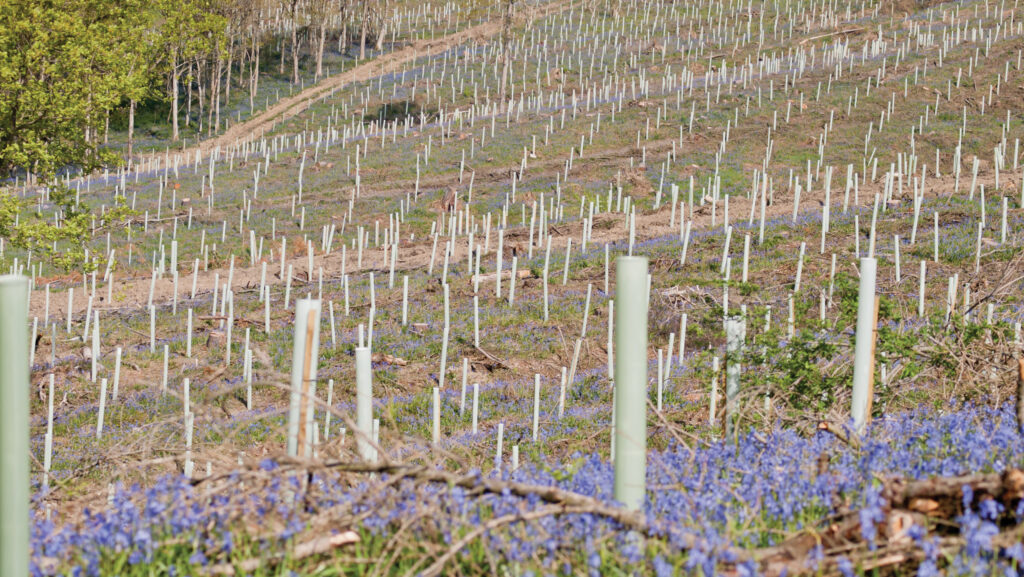Learnings from pioneering Landscape Recovery project
 Evenlode River © Dave Gasca
Evenlode River © Dave Gasca The North East Cotswold Farmer Cluster (NECFC) is almost two years into the project development phase for its Evenlode Landscape Recovery (LR) scheme application.
The group represents 160 members covering 55,000ha, with 62 farmers participating in the LR project, covering 5,000ha. This makes it one of the larger and more complex schemes.
Each participating farm is typically committing 10-15% of its land to the project, which aims to restore and enhance riparian habitats in the Evenlode river catchment, including two main tributaries.
See also: Landscape Recovery Scheme round two – how it works
“Our focus is on the connectivity delivered by the river and the floodplain, with lots of farms contributing small, strategic areas to address specific issues,” says farmer and NECFC director Tim Coates.
“The Evenlode River, which flows into the Thames north of Oxford, is one of the worst polluted in the country and has been heavily channelised, which means water flows far too fast, creating big issues with flooding and water quality as water company assets can’t operate as effectively as they should.”
Flood risk reduction
By reconnecting river channels to their floodplain including the natural channel historically used by the river, it is hoped this will reduce flow and help manage flood risk and water quality issues downstream, while simultaneously creating new riparian habitats, sequestering carbon and increasing biodiversity.
With 29 “assets” in the project area, Thames Water is a key stakeholder, as is Network Rail – the London-to-Hereford mainline crosses the river 27 times.
“It’s a major asset that takes a hammering every time there is major flooding.
“The maintenance cost to Network Rail of managing that risk in a changing climate is only increasing year-on-year.
“There are some very tangible benefits to be had from this project,” Tim explains.
The group is in contract negotiation with both Network Rail and Thames Water for investment in the project’s work.
Tim says that while the ambitious project has a defined boundary, its impact will be wide ranging, from farmers, to local residents, businesses, asset owners and other stakeholders.
“We’re trying to build a resilient landscape by getting the farmed landscape to operate in the right way.”
The past two years have been spent developing a programme of physical work to carry out on each farm, and creating the necessary legal and financial structures needed to incentivise everyone to achieve the project’s aims over the 20-plus years timeframe.
A significant challenge to attracting private finance has been the uncertainty as to exactly what aspects Defra will fund, beyond the initial seed funding which pays for the development plan, says Tim.
“Many private investors we’ve spoken to are interested in the project and can see the benefits, but want to know where Defra stands before committing fully.”
The group is now in negotiation with Defra on what works it will fund.
Funding sources
The programme of work is expected to cost £75m-£100m in total over the initial 10-year period, and all capital costs will be covered by the project, with farmers receiving a participation fee for the duration of the LR scheme agreement with Defra.
The works so far have been funded by the landowners themselves, some philanthropic funding and other sources. Funding in future will come from two main channels.
The first is investors seeking a financial return, such as a loan or equity investor. To tap into this, projects must be “investment ready” and show they can generate a return.
“We’ve asked Defra to contribute to this as a public lender at a concessionary rate, and are also talking to a leading bank and a range of private institutions wanting some form of equity participation [such as natural capital/venture/infrastructure funds],” says Tim.
The main cash generation will be from a range of nature markets, such as Woodland Carbon Code credits, soil carbon credits, biodiversity net gain, and voluntary biodiversity.
“We’ve already done projects in this area where we’ve traded in some of these markets, so they are understood.
“This project will generate more than 1m carbon credits, so even at low prices, that’s quite a large cash return, which creates the ability to service debt and return money to investors, which includes landowners, who will all be equity partners in the project.”
Water markets
Water markets are another likely source of finance, involving direct payments by key asset owners for certain outcomes including water quality improvements, reduction in flooding, and other goals.
“We’re still trying to work out what this looks like contractually, and are also asking Defra to provide a ‘back-stop’ guaranteed floor price for those payments, because we believe they are such an important public good.
“Finally, we’re investigating whether we can tap into any funding from the tourist sector given the popularity of this area for tourism.
“There are lots of routes to monetisation, but it’s still all quite novel and unproven, which is why Defra needs to provide the catalyst to kick-start the whole thing and give confidence to private investors.
“More and more institutions can see and understand the potential, but nobody has tried to deploy for a financial return in a meaningful way yet.
“The LR scheme is the policy the government can use to kick-start this market and open it up for private investment.”

Evenlode River © Dave Gasca
Landscape Recovery: Long-term plans need private finance
The Landscape Recovery Scheme is the most ambitious of the Environmental Land Management schemes in England, aiming to support collaboration among farmers and landowners to deliver large-scale (more than 500ha), long-term environmental projects.
Unlike the two other parts of the Environmental Land Management scheme – the Sustainable Farming Incentive and Countryside Stewardship – the aim is for Landscape Recovery (LR) scheme projects to be funded through public and private finance.
Funding
Government money will help get projects off the ground and private finance will sustain projects longer term, typically for 20-25 years. This could include income from a variety of sources.
The previous government’s plan to support nature’s recovery was the Green Finance Strategy, published in 2023.
This aimed to raise at least £500m in private finance every year by 2027 to support nature’s recovery in England, rising to more than £1bn a year by 2030.
However, with some first-round LR scheme projects now two years into their development period, Richard King, partner and head of business research at Andersons, questions whether sufficient private finance is coming through to support the 50-plus schemes put forward so far, in what is still a new and developing market for so-called ecosystem services.
“Generally, the biggest challenge is around habitat creation and nature recovery, where there are still some big questions over how landowners can monetise that and create a business case for investors,” he says.
“There’s also a slight disconnect in the mechanisms to link potential investors and farmers. If you’re a company, who do you talk to about investing in nature, and if you’re a group of farmers, how do you link with companies that have money to invest, and who moves first?”
AHDB head of environment-technical, Rachael Madeley Davies, has similar reservations.
“Anecdotal feedback from landowners suggests private organisations are often really keen to support projects and align to them strategically, so have the appetite to be partners, but struggle to see the business case.
“Nature markets are still in their infancy and represent a new way of working for businesses.
“For many, it’s perhaps still more a way of meeting environmental, social, and governance responsibilities, sometimes being funded by marketing budgets, rather than a commercial investment.”
However the LR scheme promises to help develop nature markets, building on work already done with the biodiversity net gain (BNG) market, and she hopes the new government will remain committed to supporting the scheme and the projects in the pipeline.
“The capability and remit of these projects is amazing, but there are challenges still to overcome to secure the finance needed,” says Rachael.
Monetising nature
While monetising nature recovery and ecosystem services is far from straightforward, Kate Russell of investor and landowner advisor Tellus Natural Capital applauds Defra for trying to develop it through the LR scheme, and insists there are many potential finance sources that well-planned projects can access.
“Start where the cost-to-benefit ratio can be more easily measured,” she suggests.

© mikedabell/istockphoto
Water companies already offer fairly well-established funding opportunities for certain actions, for example, with clear goals for what they want to achieve (such as reducing sediment, flood risk, and so on), and strategies in place to help monetise and deliver that, says Kate.
Many private companies are increasingly keen to invest in voluntary nature-based markets as a way of improving their environmental footprint and building climate resilience, she says.
“Many know this is something the next generation of consumers are more concerned about, so it could be a future game changer.”
This is particularly true for companies linked closely to customers, such as food manufacturers wanting to show an improved environmental footprint for raw ingredients.
However, it applies to others too, from haulage firms wanting to offset emissions, to pension funds looking for long-term, environmentally-sustainable investments.
Voluntary carbon markets and BNG are two other important emerging markets, although Kate acknowledges the former has faced challenges with “greenwashing” headlines in the past, and there remains some uncertainty over how big the market for BNG units will be. It is also highly localised, so will not suit everyone.
Given the scale, complexity and cost of landscape-scale projects, funding will have to come from a variety of sources, from local businesses to large companies, with the capacity to invest larger sums, she adds.
“Many corporate firms are keen to invest, but want to know what they’ll get out of it, so projects need to show this.
“It’s still not clear how the blend of government and private funding will work, so we need a period of time to learn from the pilot and second-round LR scheme projects that are just getting going,” Kate concludes.
Natural capital markets
Natural capital/environmental markets, also known as Payments for Ecosystem Services (PES) markets, allow farmers or landowners to access payments from the private sector for providing environmental improvements on their land.
The voluntary carbon market is one of the biggest PES markets, whereby farmers or landowners can gain carbon credits to sell by implementing practices that reduce carbon emissions or sequester carbon in trees or soil, such as tree planting or peatland restoration.
Buyers of carbon credits usually include large companies or government looking to offset their carbon footprint.
Other PES markets include biodiversity net gain, whereby farmers create “habitat banks” and sell qualifying biodiversity net gain units into this market for developers to buy as a way of offsetting habitat loss from new developments.
Other options include measures that reduce pollution, nutrient loading, sedimentation, or flood risk in watercourses, often funded by water companies or other key stakeholders.
